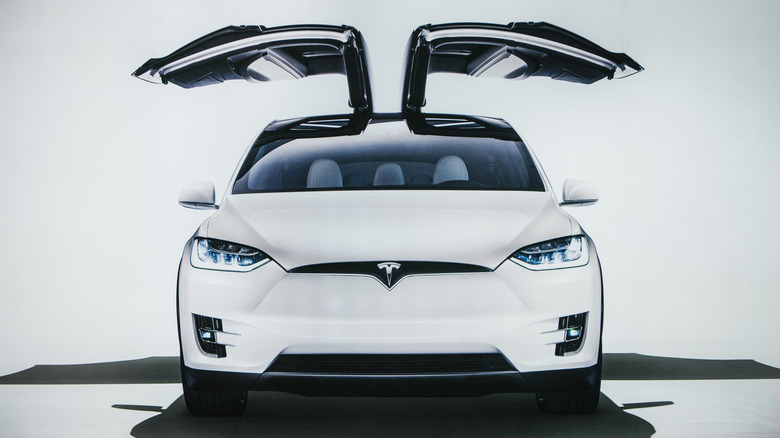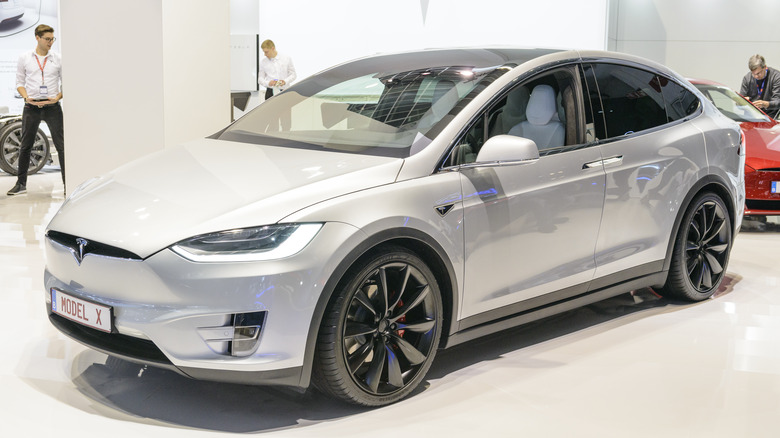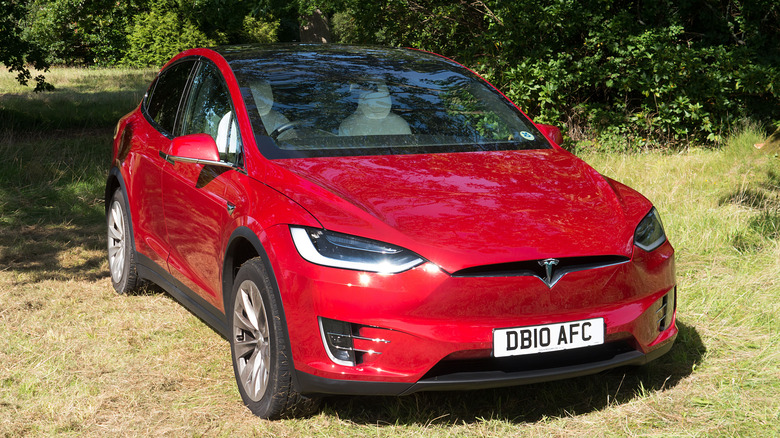These Are The Worst Quality Problems On The Tesla Model X
The Tesla Model X remains the indomitable goalpost that future electric SUVs are attempting to beat. There is no shortage of competition in the premium electric SUV niche, and the German trio of the BMW iX, Audi e-tron S, and the Mercedes-Benz EQC is hot on the heels of Tesla's world-beating SUV. First introduced in 2015, the Tesla Model X underwent multiple delays before entering production, and most of it had something to do with the Model X's most defining and cool feature: those falcon-wing rear doors.
In 2016, Tesla filed a lawsuit against the U.S. subsidiary of Swiss hydraulics specialist Hoerbiger Holding, supplier of the hydraulics system in the Model X's falcon rear doors, for oil leaking issues and system overheating. Hoerbiger Holding and Tesla agreed to settle the lawsuit in September of that same year (per Fortune). This incident has left an indelible mark on one of the many build-quality issues and inherent problems of the Tesla Model X.
Tesla Model X reliability issues
The Tesla Model X is a fast, stylish, and tech-loaded electric SUV. It's currently available in a dual-motor AWD variant and a hotrod tri-motor Plaid model that starts at just under $145,000. In return, you get a trio of high-performance, carbon-sleeved electric motors that collectively produce an eye-watering 1,020 horsepower. With that many horses, the Model X Plaid could zoom effortlessly to 60 mph in 2.5 seconds and breach the quarter-mile in just under 10 seconds.
In addition, the Model X is brimming with industry-first tech features. It has Autopilot, Caraoke, in-car gaming & video streaming, and a bioweapon defense mode. The latter enables you to survive a military-grade biological attack (theoretically) just by sitting inside your Model X. However, it's not all peaches and cream, as the Model X is known for suffering multiple quality and reliability issues.
The problems became so widespread that Motor Biscuit called the Tesla Model X the "worst electric car you should never buy" in 2020. The publication adds that Model X's inconsistent panel gaps, minor design flaws, and shoddy fit and finish are just a few of the problems. Consumer Reports also gave it a poor reliability rating despite the high scores for its performance.
More money, more problems
Indeed, most of the Tesla Model X's build-quality problems are unacceptable for an EV costing north of a hundred grand. While Tesla settled the falcon wing door issue out of court and hired a new supplier to redesign those dual-hinged doors (per Teslarati), Model X owners still encounter problems like faulty door alignment, unusual noises when opening or closing, water leaks, wind noise at high speeds, or intermittent opening or closing (per Engine Patrol). Other issues like mediocre paint quality, malfunctioning media control units (MCUs), and suspension issues are among the most reported by owners.
Of course, there's a silver lining amongst the dark clouds. Motor Biscuit stated that buying a Tesla Model X could be "hit and miss" since most vehicles have fewer significant problems than most. We understand why most EV buyers consider Tesla cars the saving grace of the automotive industry (and the planet). It's hard to deny that Tesla kickstarted the EV revolution and made brilliant examples of what modern EVs should look like and how they should feel on the road. As it stands, the Tesla Model X remains the king of electric SUVs, although it takes a different type of buyer to look beyond its shortcomings.


